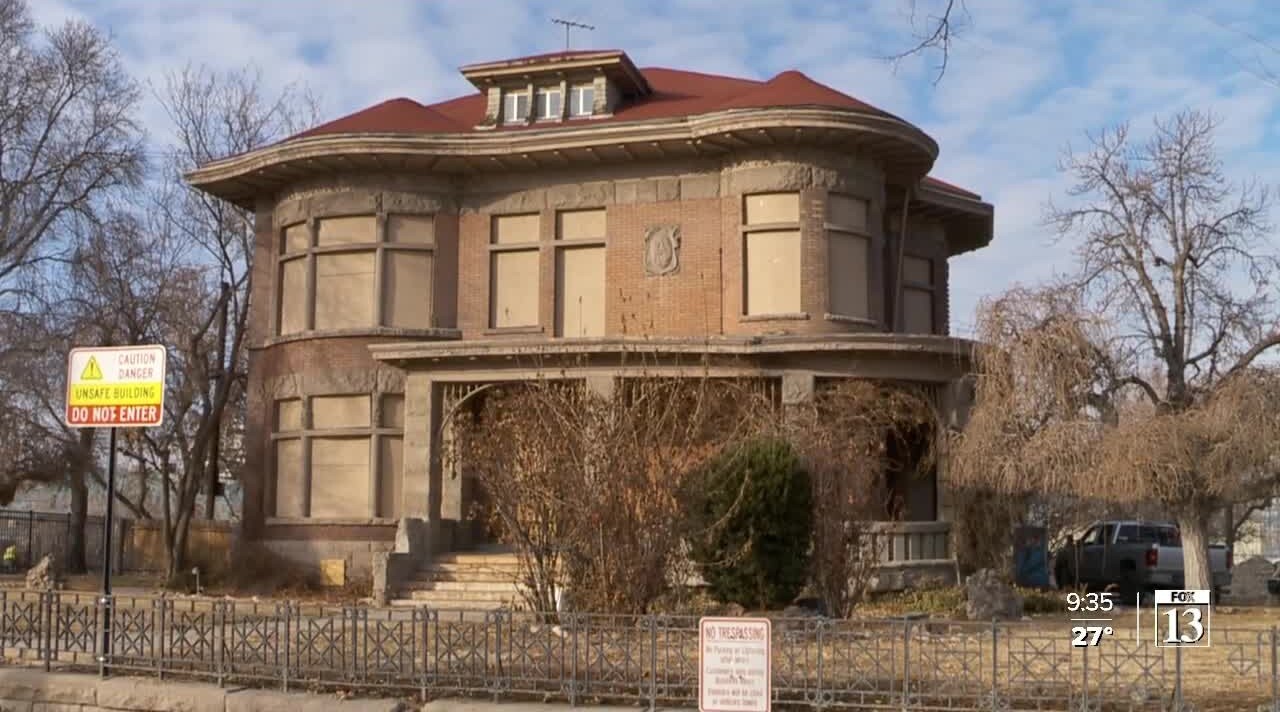SALT LAKE CITY — Even a pandemic can’t stop the building boom in Salt Lake City.
Several high rises are currently under construction, including a 700 room, 28 story Hyatt Hotel on West Temple, and two residential towers on State Street.
Elsewhere in the city, dozens of mid-rise apartment buildings have popped up in recent years, and more are on the way.
But as the boom continues, some say it’s taking a toll on history.
The fight to save the Utah Theater, which opened as the Pantages Theater in 1918, is all but over.
Salt Lake City bought the aging building on Main Street from Howa Construction in 2010 for $5.1 million.

At that time, city leaders told FOX 13 they’d make its restoration a priority after the completion of the nearby Eccles Theater. When asked if Salt Lake City had enough theaters already (the Capitol Theatre which is home to Ballet West is also close by), they insisted the rehabilitated Utah Theater would have different uses, such as showing films and hosting concerts, and that the synergy between the theaters would become the cultural heartbeat of the city.
But years later, during Mayor Jackie Biskupski’s term, the city changed positions. Renovation costs were estimated upwards of $60 million, and rather than ask taxpayers or private donors for the cash, the mayor and council gave the property to a developer in exchange for future perks such as a public open space.
WATCH: Uniquely Utah: Historic theater may not be restored
The developer, Hines, now plans to replace the theater with a 31-story apartment building with 400 units. Forty of those will be set aside as “affordable housing," according to a report from Building Salt Lake.

“Nobody goes to Paris to stay in the housing,” Pete Ashdown said when asked about the plans.
Ashdown, a business owner and resident of Salt Lake City, led the last fight to save the Utah Theater. He feels past city administrations didn’t try hard enough to save the theater, noting that it’s sibling Pantages Theaters in Tacoma and Minneapolis have been beautifully restored.
Ashdown is now concerned about another city-owned property that was once a cherished community gathering place: The Wasatch Plunge.
“Out on Beck Street, that was a beautiful art deco terra cotta building that has a large swimming pool on the inside,” Ashown recalled.
The pool, which was opened to the public nearly a century ago, was fed by warm springs in the area. In more recent decades, it housed a children’s museum, but it now sits empty and in disrepair.



“I think most places mean something to someone," said Jacob Barlow, a real estate agent and documentarian who expressed concern over the future of historic Latter-day Saint chapels. “The old 1890s to 1910 chapels are beautiful; things like that seem to be going away pretty quickly."
David Amott, the executive director of Preservation Utah, agrees. He’s been following the fate of one such building rather closely.
An historic LDS chapel on Salt Lake City’s west side was once owned by the city. In recent years, the former 29th Ward building was sold to a private party for $150,000. Now, the owner says earthquake damage sustained last March has rendered the building best as a tear-down, and he’d like to sell the land. If demolition is approved, he stands to make hundreds of thousands of dollars.
“We feel like this building is viable. I know a number of people who’d be more than happy to buy it from the current property owner for the amount he paid,” said Amott, who believes the building will have a “happy ending,” given that there are legal options to prevent demolition in this case.

Preservation Utah is equally concerned about the future of the Fisher Mansion on the city’s west side. It’s also owned by the city, and while various ideas have been put forward for uses, its exact plan is uncertain.


Another property Preservation Utah is worried about losing to development is a big one: the Utah State Prison.
“It’s not what people consider a pretty building, but preservation is about more than just the old Victorian on the hill,” Amott said. “When you build something, you really are putting down more than brick and stone and glass — you are putting down values and world views.”
He knows most of the Draper Prison’s 323 acres will be sold and redeveloped, but he would like to save a few acres at the prison’s core.
RELATED: The ballooning cost of new Utah State Prison site
“There are thousands of stories that nobody knows at the prison that will be lost if that building goes," Amott said.



